How to save an orchid without leaves, but with roots?
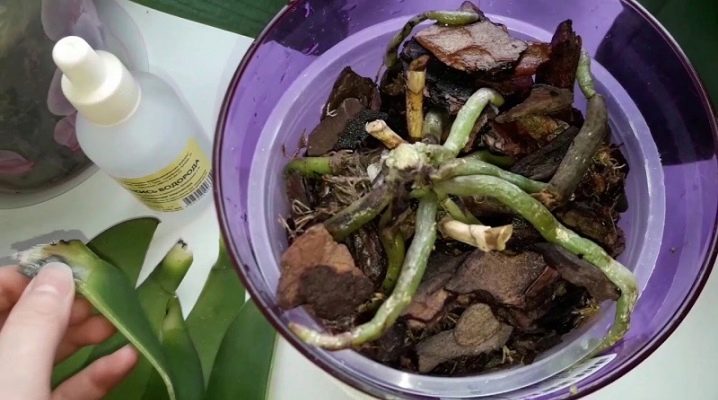
The orchid is a very beautiful, but at the same time quite capricious plant that requires special attention. However, despite all the shortcomings, many want this flower to decorate their home, and therefore they are engaged in breeding it.
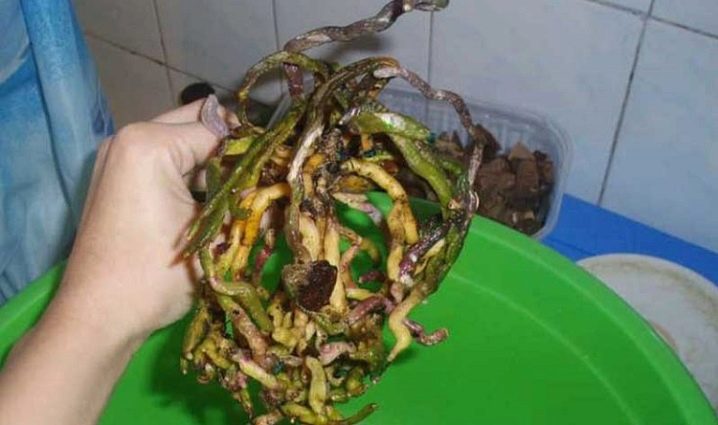
Why has the orchid lost its leaves?
It often happens that the orchid loses its leaves over time. This can happen as a result of a natural process that is common in all plants. In this case, the leaf immediately turns yellow and then dries up completely.
Two leaves can die at the same time, however, you should not worry. Indeed, in their place should remain the bulk of the leaves. In addition, there are some orchids that have an incomplete life cycle. In winter, these plants can completely fall off the leaves, however, the root system will be healthy. Orchid leaves can live up to three years, and in some species, up to seven.
However, it also happens that the leaves die as a result of improper care. In this case, you should immediately start worrying, because the entire plant may completely die.
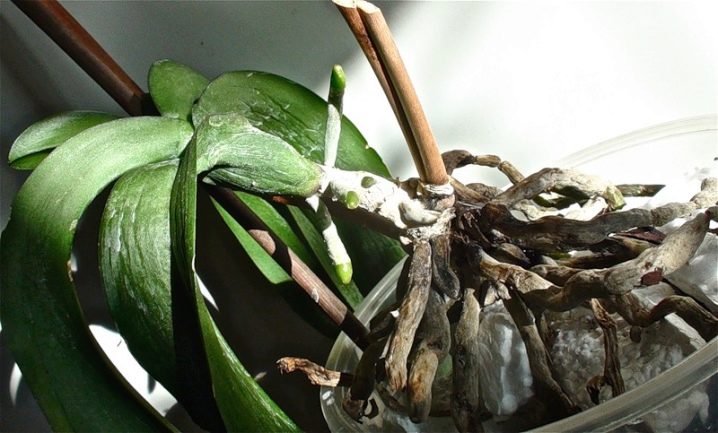
This happens in some cases, we will consider them in more detail.
- Fungal diseases. If the plant is attacked by a fungus, the roots of the orchid are attacked first, and only after that the disease already spreads throughout the flower. Fungi clog all the "vessels" of the orchid, due to which the root system is completely wrapped in rot. As a result, neither moisture nor nutrients can get to the leaves. If you do not immediately notice such a disease, then the plant may die completely. The roots are attacked first, and then the leaves fall off.
- Incorrect lighting. As a result of choosing the wrong conditions, the plant immediately begins to wither. At first, the leaves turn yellow, wither, and then completely fall off. In the future, the roots also lose their vitality.
- Failure to comply with the rules when watering. Many people think that any plant needs to be watered quite often. However, in the case of an orchid, everything should be done the other way around. Water the plant only after the soil is completely dry. Otherwise, the roots will begin to rot, and the leaves will crumble.
- Non-sterile primer. If the plant has been in a pot for a long time without transplanting, then either insects or fungal microorganisms can appear in it. As a result, not only the leaves but also the roots can be affected.
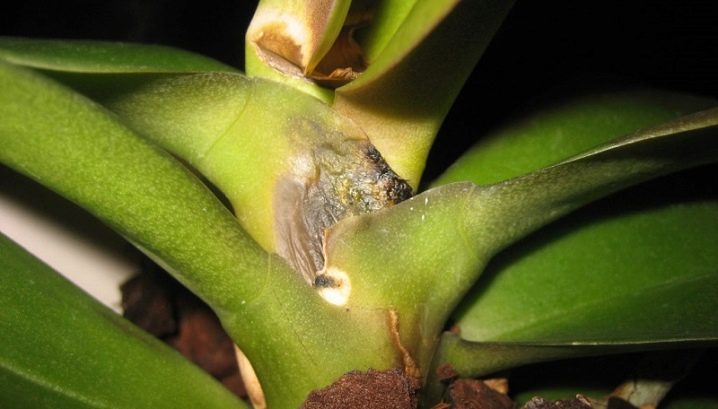
How can I save her?
If the plant has completely or partially fallen off the leaves and the roots began to disappear, then the orchid urgently needs resuscitation. You can revive the plant at home using different methods.
You can start by placing a wilted plant in a fungicide solution. This will significantly increase her immunity, as well as cope with the emerging problems.
You can also revive the orchid in another way. To do this, in a specialized store, you need to purchase a greenhouse or make it yourself from an ordinary plastic box. Its bottom must be covered with expanded clay, as well as sphagnum moss. An orchid should be placed in this environment. The plant will need a lot of light to restore it, so in order for it to be enough, it is necessary to buy a phytolamp in advance. Next, you need to do the following procedures:
- periodically soak the orchid in a special solution;
- in places where leaves should grow, wipe the trunk with special stimulating agents.
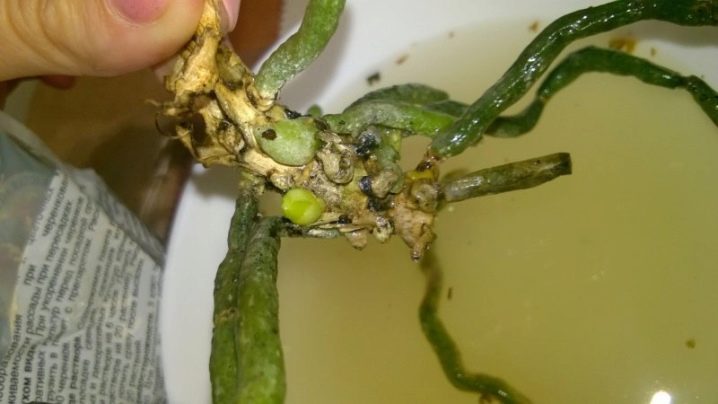
The composition of restorative preparations may include B vitamins, which will help to completely restore the roots of the orchid. It can also be growth regulators, which include phytohormones. In addition, you can apply fertilizers based on phosphorus or potassium.
There is another way to resuscitate such a plant. To do this, after inspection, it is necessary to remove all rotten and dry roots. The same should be done with the roots with small spots or dots. All manipulations should be carried out with a disinfected instrument. After that, the cut off places must be treated with any fungicide. Then the plant must be left to dry for 2-3 hours. Then the orchid can be transplanted into fresh soil and moved to a well-lit place. Then you need to create the appropriate conditions, that is, comply with all watering rules.
Another method of resuscitation can be used - this is a hot shower. To do this, you first need to water the plant with ordinary water, and then, literally half an hour later, with water, the temperature of which will be up to 45 degrees. Such resuscitation can be carried out no more than twice a month. After that, you need to let the orchid drain for 12 hours, and only then the flower can be put in the same place.
Any of these options will help the plant cope with the problems that have arisen, with the result that it will survive.
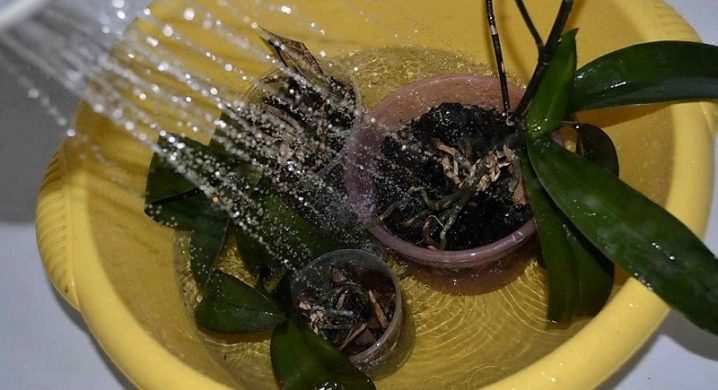
How to propagate with roots?
Orchid propagation can be done in different ways. However, it is imperative that you familiarize yourself with the basics. Young plants should not be used as they will be difficult to separate. In addition, a young plant may even die. You can do everything right either with peroxide or with a solution of potassium permanganate.
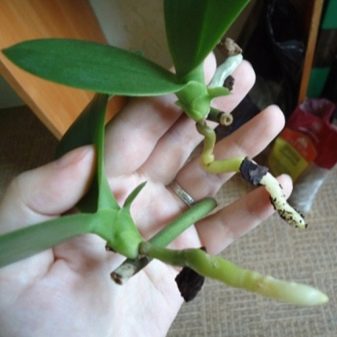
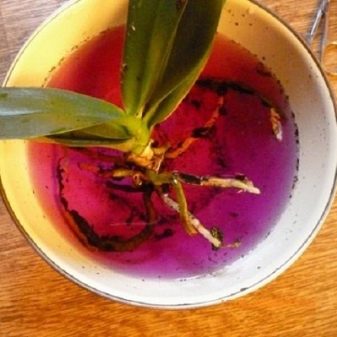
Through the roots
Separation is allowed only half a month after the orchid has faded. When dividing, all the roots must be absolutely healthy, and on each of the divided parts there must be several pseudobulbs (at least two). The more there are, the more successful the division will be, which means that the plant will be able to take root faster.
The first thing to do is to get the orchid out of the pot and clean it of soil. To do this, you can gently shake the plant, and the excess substrate will disappear by itself. Next, the roots of the orchid should be placed in water heated to room temperature. They should be there for about half an hour. Then, using a very sharp knife, you need to cut the root, and then divide the orchid into two parts.
The cut areas should be sprinkled with either ground cinnamon or powdered activated carbon. Then the plant must be left for 2-3 hours so that the roots dry out a little. After that, both divided parts can be seated in separate pots, with soil prepared in advance. It can be with or without sphagnum moss.
Having transplanted an orchid, you need to closely monitor it. Watering is best done by spraying.
The appearance of the first roots or leaves will indicate that the orchid has taken root, and there is no need to worry about it anymore.

Air shoots
Orchids reproduce by the air method. If the flower has many silvery aerial roots, then they can be used for reproduction. For this purpose, you need to choose the strongest of the roots that appear and carefully, without cutting off from the stem, put on a layer of moss in the same pot. Before this, the moss must be slightly moistened. Then a small incision should be made in the root and treated with a special stimulating agent. A process should appear at the cut site, which will have small roots in a month.
After their appearance, the baby can be cut off from the main plant and sprinkled with cinnamon or charcoal over the cut site. The incision should be no more than one centimeter from the main root.Now you can transplant it into a separate pot, which will be a little smaller. To quickly grow a good root system in a new plant, you can make a homemade greenhouse. To do this, cover the branch with a plastic cup cut from the side and create a greenhouse effect.
Moss must be regularly moistened so that a young orchid can grow and develop quickly.
All separation methods can be used for those plants that become cramped in the pot.
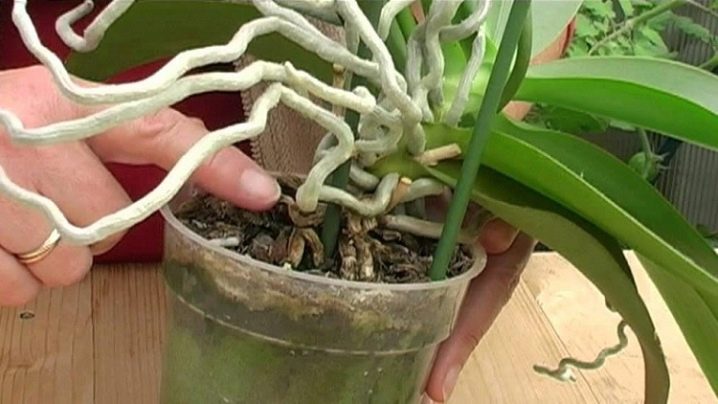
Prevention measures
After studying the causes of the disease of the plant, it is imperative to develop a number of preventive measures that will subsequently help to avoid further mistakes and prevent them from reappearing. To do this, you need to follow the following rules.
- You need to fertilize the orchid only with those compounds that are sold in specialized stores. It is important that their concentration is minimal. In addition, fertilization is not recommended at all for the first few months.
- Water the flower with clean water. It can be distilled, boiled, or well-filtered liquid.
- It is imperative to monitor the change of soil, while you need to buy it in flower shops.
- Observe the temperature regime. The temperature should not be lower than 15 degrees and not higher than 25.
- Don't forget about proper lighting and buy good and powerful lamps that are fixed to the ceiling or windowsill.
- The container purchased for the orchid must be appropriate. That is, it must be transparent so that the roots are constantly illuminated.
Therefore, buying classic pots made of dense clay or ceramics is not worth it.
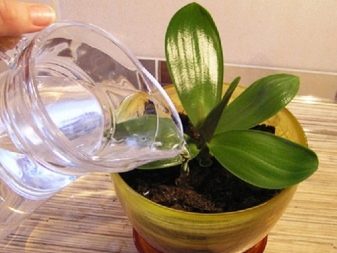

Summing up, we can say that you can cope with the problems that arose when caring for an orchid at home. In addition, you should not immediately panic if the leaves begin to fall off, because this can happen naturally, and this situation will not be reflected at all on the flowering of the orchid. In just a few months, the pet will delight the household with its flowers and fresh green shoots.
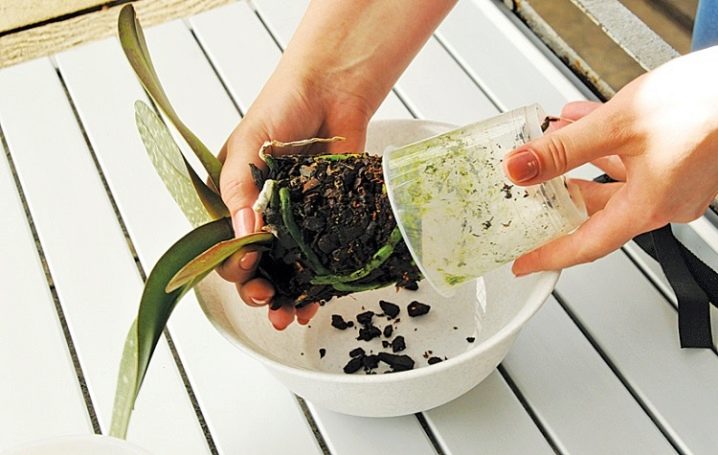
You can learn more about how to reanimate an orchid without leaves and a growth point.































The comment was sent successfully.